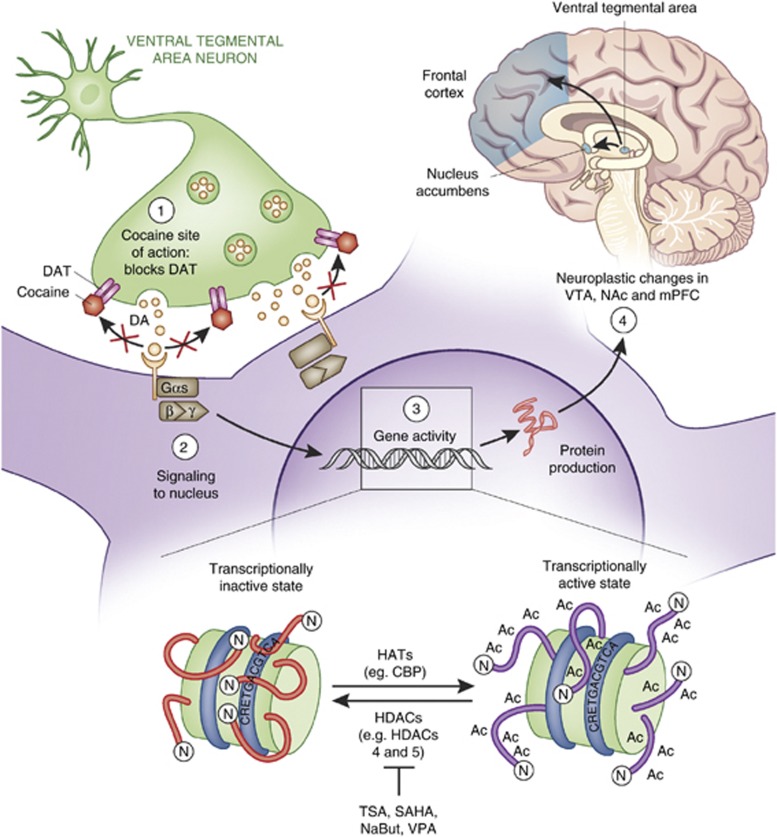Figure 1.
Cocaine causes transcription-dependent neuroplasticity in the reward pathway. (Brain top right): Cocaine alters the dynamics of numerou neurotransmitter systems in the mesocorticolimbic ‘reward pathway' of the brain, which includes the ventral tegmental area (VTA), nucleus accumbens (NAc), and prefrontal cortex (PFC). These brain regions are critical for reward, reinforcement, and higher cognitive functions. (Main panel): Cocaine indirectly enhances the levels of the neurotransmitter DA at the interface between VTA cells and NAc cells by binding to and blocking DAT (top left). The subsequent activation of D1- and D2-like DA receptors stimulates intracellular signaling cascades that direct TF binding to DNA, facilitating neuroplasticity in response to cocaine intake. (DNA inset): Nucleosomes are in equilibrium between transcriptionally inactive and active states. HATs and HDACs have opposing actions to push the equilibrium one way or the other. Histone acetylation (by HATs) generally allows for TF binding and gene expression while histone deacetylation (by HDACs) represses transcription. Adapted from Nestler (2005) and McQuown and Wood (2010).

